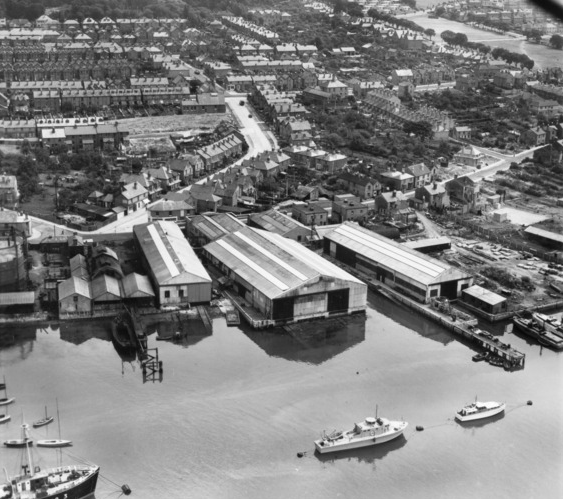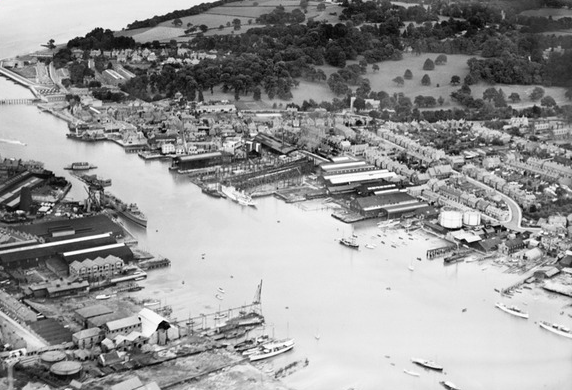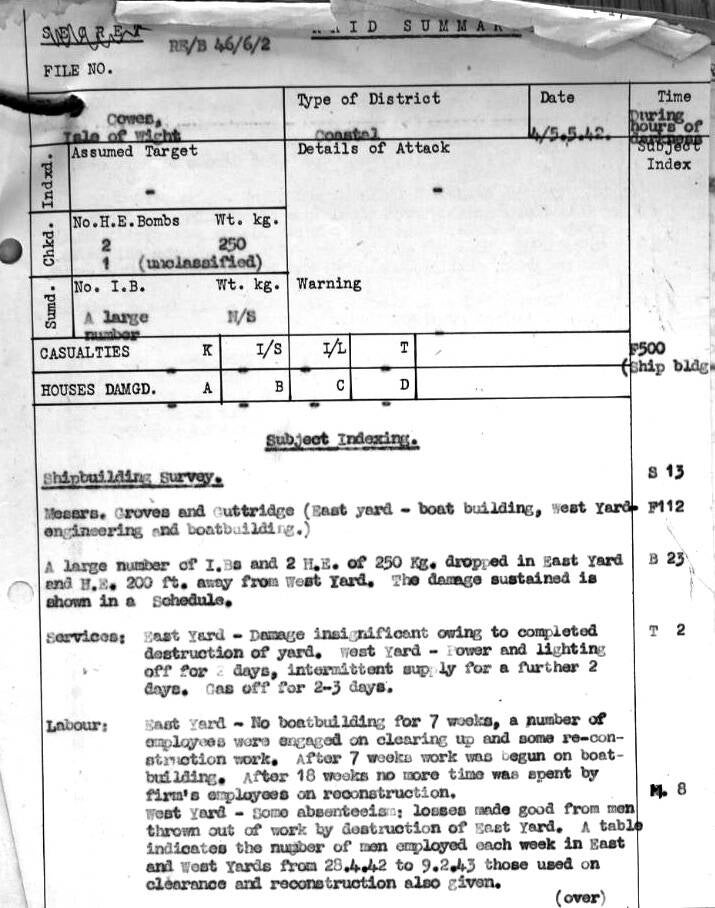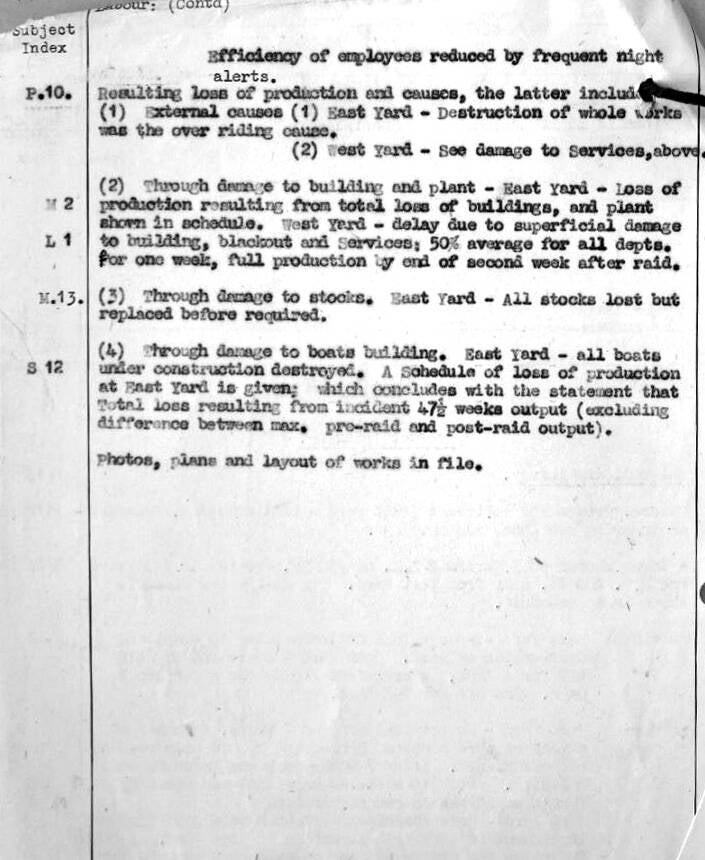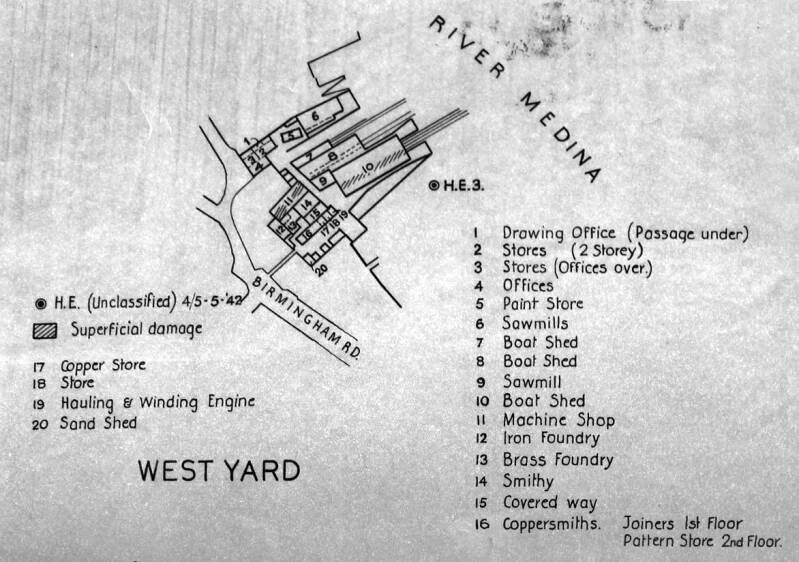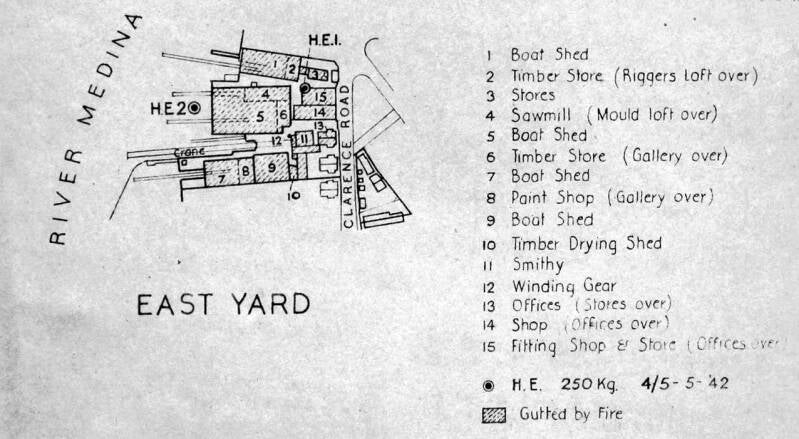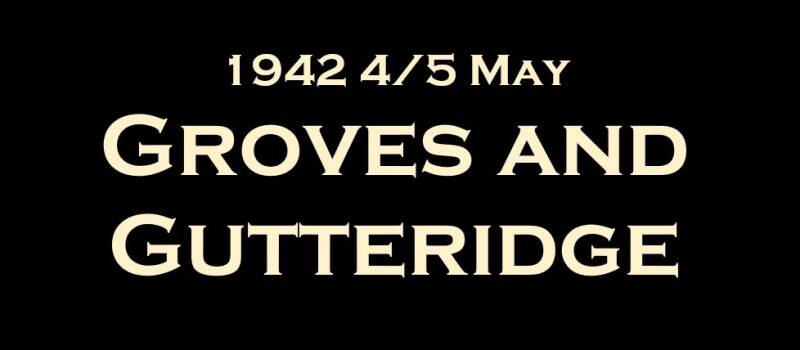
Groves and Gutteridge maintained sites on both sides of the Medina undertaking work of national importance. During the attack of 4/5 May 1942, only a few high explosive bombs had a direct effect on both, but the proliferation of innumerable 1kg incendiary bombs had a devastating effect on production at the East yard.
What follows is detail extracted from Research and Experiments folder B46/6/2, categorised as ‘Most Secret’ and closed from public scrutiny until 1972. The content reveals that in addition to an initial appraisal made soon after the events of the 4/5 May, several revisits and communications were established to extract further information until almost a year later. Although some interesting plan drawings are included in the folder, sadly there are no photographs in the file.
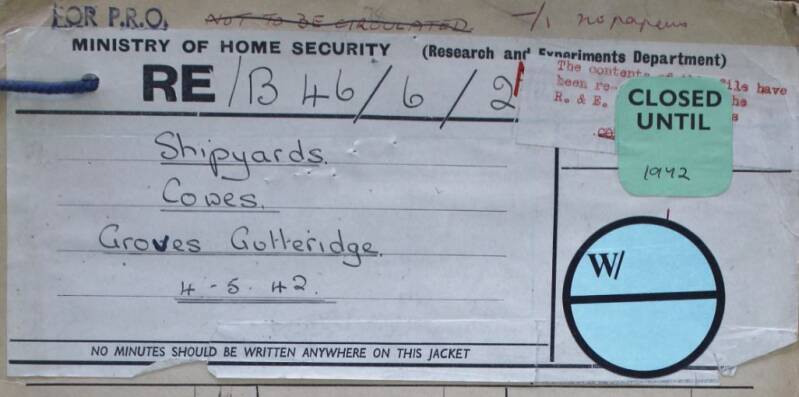
RE/B46/6/2
The Raid Summary sheet (images below) is a record of the initial notification received by the Research and Experiments Department. This is followed below by the complete Shipbuilding Survey under a final date of 7 April 1943. This was produced by H. Reedman of Nottingham, Deputy Regional Technical Investigating Officer of R.E. Section 4.
A composition of the salient points of H. Reedman’s report follows below.
The bulk of the boatbuilding including 30ft. and 60 ft. Admiralty fast boats, 60 ft. General Service and Admiralty, 55ft. Fast Harbour Despatch boats, 45ft. Lifeboats, and 71 ft. R.A.F. Launches, is carried out at the East Yard. At the West ‘Vectis’ Yard, all the engineering including the manufacture of propellers, rudders, propeller and intermediate shafts, steel couplings and all gear for R.A.F., Admiralty, and War Office small craft, engine spares for French Chasers (sic) and general engineering. Boatbuilding contracts include 48 ft. Target Towing Launches and 30 ft. Fast Launches. Both yards were working to full capacity prior to the attack, the yards are separate and are on opposite sides of the River Medina, the total are approximates 3 ½ acres. Some exports of finished castings are made from the ‘Vectis’ works – Engine units are supplied by the Ministries concerned.
Damage – the whole of the works at the East Yard together with office premises were gutted. The office premises were completely destroyed together with the firms’ books so that pre-raid figures for wages and production figures are not available, the unit value is therefore based on man-hours calculated on post raid production and organisation.202 workers normally employed. For 7 weeks no boatbuilding was done at this yard, though a number of the employees were engaged on clearing up and some reconstruction work. After a further 18 weeks no more time was spent by the firm’s employees on reconstruction and the number of employees engaged on boatbuilding steadily increased to 150 after a further 18 weeks. After this period (2.4.43) no further increase was expected owing to the limited number of men available. 17 boats from 45’ to 72’ were destroyed in the fire, representing approximately 27 weeks output.
Blast damage to glass and roof and wall sheeting to Boat Shed and Machine Shop at West Yard, total area displaced approximately 200-300 sq. yards. Blast damage to buildings affecting black-out arrangements curtailing night shift in the boat shed affecting 5 men.
East Yard, owing to its complete destruction was not affected by disruption of services. West Yard, power and lighting cut off for two days, intermittent supply until 5th day; gas supply cut off for 2-3 days.
Labour – West Yard absenteeism due to attacks on workers’ homes, this was to some extent negatived by recruitment of workers from the East Yard. 98 to 108 made up of men 53%, boys 26%, women 21%, engaged 60% on engineering and 40% on boatbuilding. All workers live within a small distance of the works.
Bombs – I.B.’s, number unknown, caused the complete destruction by fire of the works at the East Yard together with the office premises. It is not known whether the conflagration was the result of a cascade of I.B.’s or of spread from a major fire in one of the shops but it is obvious from the lay-out that the firebreaks were inadequate for the type of contents. 2 H.E. of 250kg were dropped in the East Yard. At the West Yard one H.E. dropped in river or mud at a distance of approximately 200 ft., size probably 250kg.
Labour – 200 employees were on average employed at this yard (East), all the workers live close at hand.
After the rebuild, the East Cowes yard suffered further damage during the raid of 15 May 1944.
If you have enjoyed this page, please consider making a small donation to the Firefighters Charity.


